Smart Thermostats in the UK: Which one should you pick?
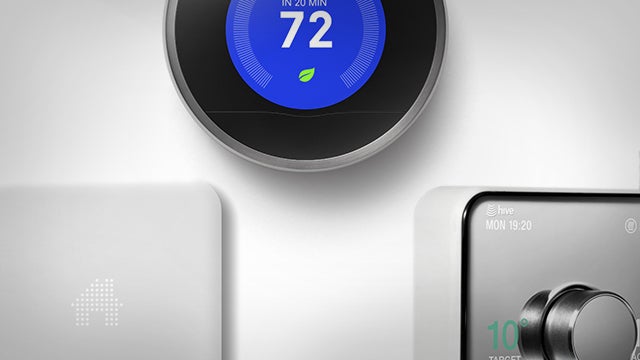
Smart Thermostats in the UK explained: We turn up the heat on Nest, Hive, tado° and the best of the rest
Thanks to the rise of the smart thermostat, central heating has never been, well…cooler.
Promising to slash bills and reduce energy use the app controlled thermostats offer pinpoint control over your heating and hot water (and cooling in the US), but what really makes them smart, how do they work and which model is right for your home and lifestyle?
What makes a ‘smart’ thermostat smart?
Instead of basic on/off and temperature control a smart thermostat allows you manage every minute of your home’s heating schedule from a smartphone, tablet or computer.
And while many thermostats have been offering daily on/off control for years the slick apps make it quicker and more intuitive. Two minutes with any of the main brands and you’ll be able to create a heating schedule specific to you whether you get up late on Saturday, or love it steaming hot on Wednesday afternoon (for whatever reason).
Related: Hive vs Nest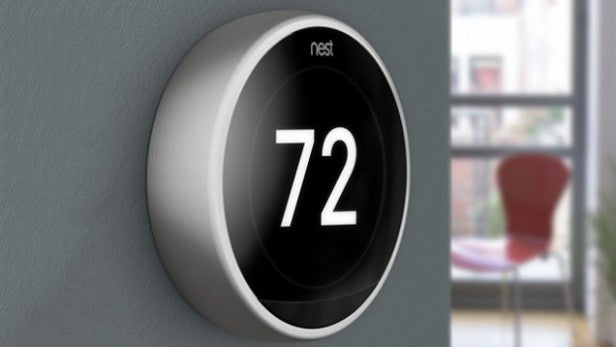 Nest’s Learning Thermostat is one of the most well-know smarthome solutions
Nest’s Learning Thermostat is one of the most well-know smarthome solutions
But there’s nothing overtly ‘smart’ about a stylish app…aside from the ability to control your heating remotely. The real intelligence is in their ability to learn how you use your heating, sense whether anyone is home or not, how hot you like it when you are in and how long your boiler takes to get the house up to temperature.
Most smart thermostats can adjust temperature based on factors such as local weather and humidity and can sense when the house is empty and switch to ‘away’ mode to save energy, while some use geofencing and GPS to detect when you on the way home and fire up the boiler automatically.
‘Zoned heating’ is the latest upgrade to many smart thermostat systems. By installing wireless thermostatic radiator valves (TRV) or separate thermostats you can control the heat in individual rooms not just the whole house, so, for example, the nursery can be kept warm at night without the rest of the house overheating.
How much could you save?
Smart looks and flashy app control is one thing, but one of the main reasons for investing in a smart thermostat should be to save energy and money. So how do the main players compare?
Tado says that its ‘will pay for itself within a year’ by cutting your heating bills by between 14% and 26%. On average ‘the Nest Thermostat saved 10-12% on heating.’ That’s $131 to $145 per year according to them, and payback in under two years. British Gas says the Hive ‘could save you up to £150 a year’ while Netatmo claim a 37% drop in energy use. Honeywell estimate a whopping 40% saving with their advanced Evohome multi-zone system.
Related: Philips Hue review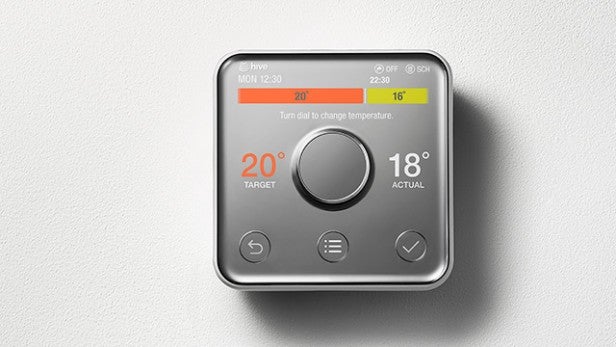 Hive upped its design game with the second-gen thermostat
Hive upped its design game with the second-gen thermostat
Impressive stats, but remember these figures are generally calculated using a previous worst case scenario for energy use. If you were already using a thermostat with a digital timer, or were already frugal with your heating, don’t expect to save anywhere near as much as the claims suggest.
Internet of things
Given that your thermostat is already connected to your home’s Wi-Fi it wouldn’t be especially smart if it didn’t offer some IoT compatibility.
Tado°, Nest, Netatmo and Honeywell all offer IFTTT (If This Then That) channels giving you the chance to link your heating to a bunch of connected tech including SmartThings, WeMo and Philips Hue.
Apple’s slowly emerging Home Kit protocol will not only bring voice control to a heap of connected tech but also allow all your compatible IoT gadgets to talk and work seamlessly.
Related: What is HomeKit?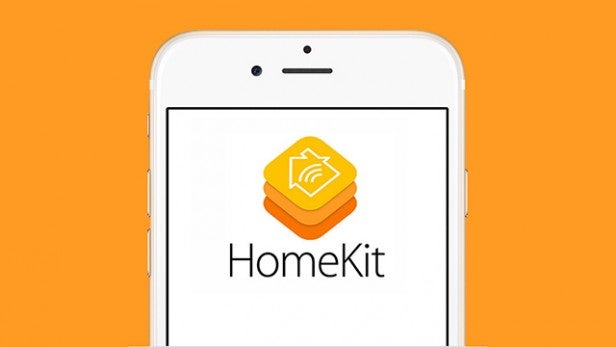 Apple’s HomeKit is becoming more common
Apple’s HomeKit is becoming more common
The Nest family already includes the Nest Protect smoke alarm and Nest Cam which all talk to each other – the camera can switch on automatically when the thermostat senses the house is empty for instance. There are also an increasing number of products that Work with Nest. Mainly US based for now, such as Zuli light switches, Yale locks and Whirlpool washing machines, but we love the Philips Hue and Nest Cam collaboration that makes it easy to create an advanced lighting security system at home.
Hive has also just launched a selection of door and motion sensors, wireless plug switches and lights all of which use the Honeycomb platform. We’re not yet sure what they’ll be able to do together, but we’re guessing British Gas has a plan.
Related : UK guide to smart energy
What’s available?
Nest Learning Thermostat | £249 including installation | Nest Learning Thermostat review
The original smart thermostat is now on its third generation, and as part of Google’s extended family offers unrivalled looks and a unique learning proposition that adapts uniquely to the way you use your home’s heating.
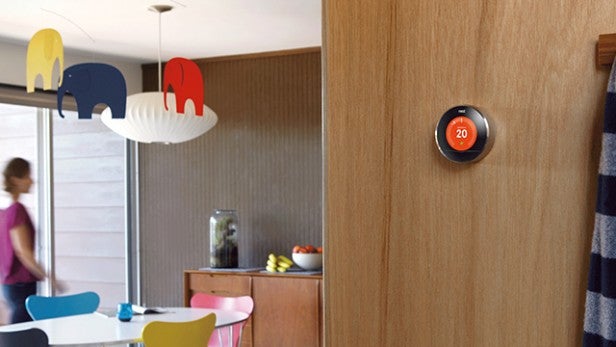
With a motion detector, three temperature sensors, and a humidity gauge Nest monitors whether you’re home and how warm you like it, and creates a unique heating schedule, which, assuming they get it right, should mean never needing to manually adjust the thermostat.
Aside from its ability to learn how you live, Nest offers full remote control via the slick app and unrivalled connectivity to other smart gadgets, not least the Nest Protect and Nest cam. Nest automatically turns itself down when nobody’s home to help you save energy and depending on the type of boiler you use, can now control the hot water tank as well as the heating.
Hive Active Heating | £249 including installation
British Gas’s Hive lacks the learning ability of Nest but does make it extremely easy for people to manage their heating and hot water (depending on boiler type) via smartphone or tablet.
As you’d expect there’s remote on/off control, extensive daily and weekly scheduling, frost protection, holiday mode and handy geolocation tracking that can send reminders to turn your heating on before you get home, or alert you if you’ve left it on.
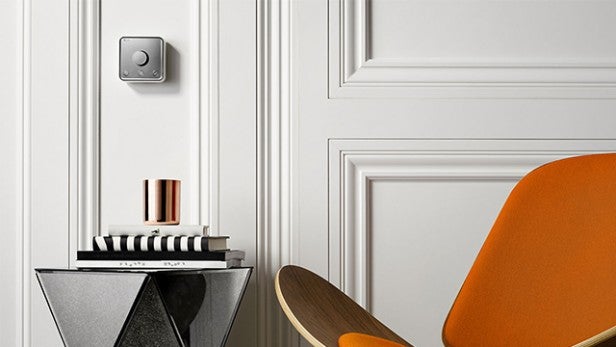
British Gas also offer Hive Multizone (£179) designed for homes with more than one thermostat already. This extension kit allows you to control both zones – upstairs and downstairs for example – via a single app, which should make your heating more efficient and house easier to keep at the perfect temperature.
tado° | £199 or rent for £59.88 per year (£50 installation)
Unlike the competition tado° relies heavily on geofencing to track each member of the household (those with a phone at any rate). As a result it knows to turn the heat off when everybody has left the house and similarly, when it detects someone coming back from work, it fires up the boiler. Furthermore, tado° uses its internet connection to monitor the weather so it can time when and how hot the heating needs to be given the forecast.
Like Hive it can also be extended to cope with multiple thermostats (extra thermostat, £179), but the good news is that they’re launching connected radiator valves (mid 2016) to make it simple to create a true multi-zone heating system.
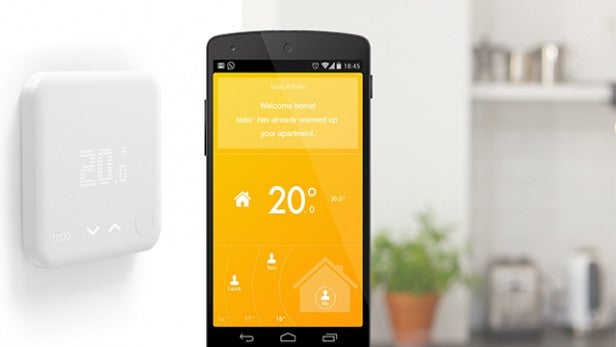
Tado° also monitors boiler pressure, valves and pumps and can alert you to any possible issues. You can even book an engineer visit through the app.
They also offer a rental option, great for anyone who doesn’t own their own home, but wants to make significant energy savings.
Wave | £239.99
Boiler manufacturer Worcester Bosch designed the Wave smart thermostat to work specifically with their Greenstar combi and system boilers. The attractive looking thermostat replaces your existing wired model and can be paired with up to eight devices (Android and iOS).
You get all the usual remote control and programmable timer options – the Wave learns and adapts to your favourite temperature settings as you’d expect – and while its lack of compatibility makes it unsuitable for many, if you do have a Worcester Bosch boiler the Wave will help it to run more efficiently. Not only does it control room temperature but the thermostat also monitors the boiler’s performance based on weather and load compensation, which helps it to run more efficiently saving you more money.
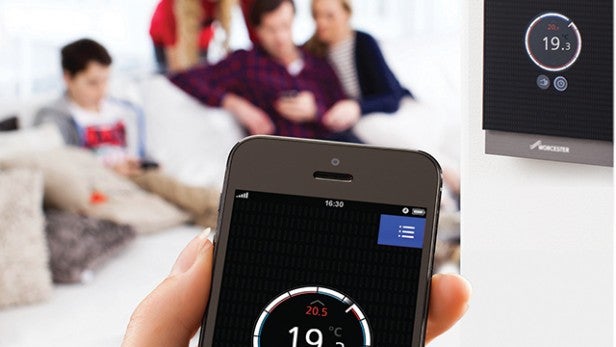
Netatmo | £119 or £199 installed
Designed by Philippe Starck this basic but effective battery powered thermostat is easier to install than most making it great value for money.
As for smart features it is a little basic compared the Nest or Ecobee but aside from the usual remote control and detailed heating schedules it does have a feature called Auto-Adapt, which predicts when the heating will need to be on, based on your home’s insulation and the temperature outside.
We’re not sure how any people will enjoy the 37 per cent energy saving claims, but the system is so user friendly it’s a great option if you want more features, and remote access without the hi-tech frills.
Zoned heating systems
Honeywell Evohome Wifi | THR99A1000 Thermostat £248, THR92H1002 Radiator valve, £65 each
It’s expensive, but the Evohome Wi-Fi is one of the most advanced smart thermostat available. By installing wireless smart radiator valves you can control the heat in up to 12 zones via the app or the comprehensive colour touchscreen main thermostat.
The system can also be upgraded to control hot water and for use with underfloor heating systems.
Creating a zoned system offers supreme control and greater energy savings, and given that all new houses larger than 150m2 have to be built with at least two zones of heating (2013 Building Regulations Part L) it’s the next logical step in smart home heating.

Heat Genius | Remote heating control, £249.99, Hot water control, £50, radiator valves £59.99 each, room sensor £34.99
Like the Honeywell, Heat Genius uses digital radiator valves, a smart thermostat and an app to create ultra efficient heating zones, but it also uses a motion sensor to know when the house is empty, allows rooms to be grouped – much like Sonos for central heating – and can even sense if a window is left open and will turn off the system in that room to save energy.
Best suited to larger homes and big budgets – a complete set-up will cost over £700 – but the system is modular so you can build it up over time. It isn’t the greatest looking piece of kit, especially stacked up alongside Hive and Nest, but according to Heat Genius, a redesign of both app and hardware is imminent.
Climote | €399 including one-year free remote access, €3.69 per month after
Also known as the Scottish Power Connect, Climote is a three zone smart heating system – living room, bedroom and hot water – and is designed to quickly replace the old fashioned pin-wheel timers. While it lacks the polish of the something like the Nest it has the advantage of using an imbedded 3G sim card so you don’t have to have Wi-Fi to benefit from remote control.
Obviously there is also a smartphone app that allows more detailed scheduling, temperature bosting and timers, but you can also send basic texts from ye olde mobiles which may appeal to a more mature audience.
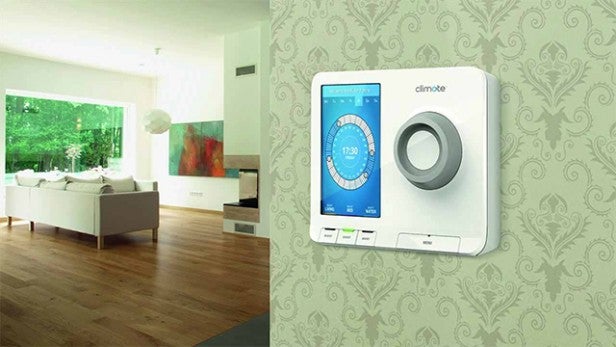
Heatmiser Neo | Single Zone NeoKit, £199, two zone £264.10, Heatmisershop.co.uk
You won’t find a designer touchscreen to impress the Joneses, but the Neo is a sophisticated whole house system that gives remote control over the heating for each room. The system features the flexibility of geofencing much like tado°, while Apple users (it is Android and Windows compatible for most things) can create recipes to control multiple heating instructions – turn downstairs to cool and bedrooms to hot half an hour before bedtime for instance – at the touch of the Apple Watch.
Better suited to new build properties or homes undergoing renovation, the Neo is a fully wired system that relies on individual room thermostats instead of wireless thermostatic radiator valves.
This makes it and while it’s easy to update your existing wired thermostat, but difficult and labour intensive when expanding to other rooms It’s also worth nothing The neoHub requires a DHCP compatible broadband router.
(apester:56b32e1d8b03d1a9470d1edb)
Have you started to turn your house into a smart home? Let us know in the comments below


